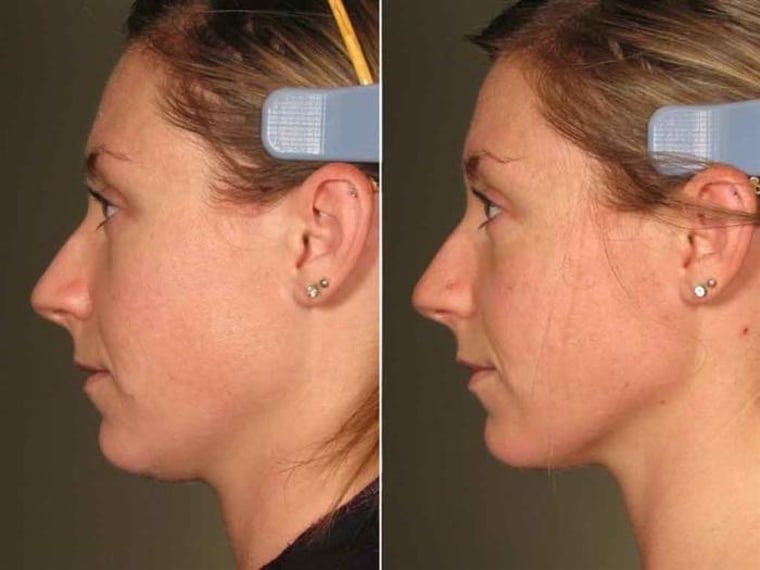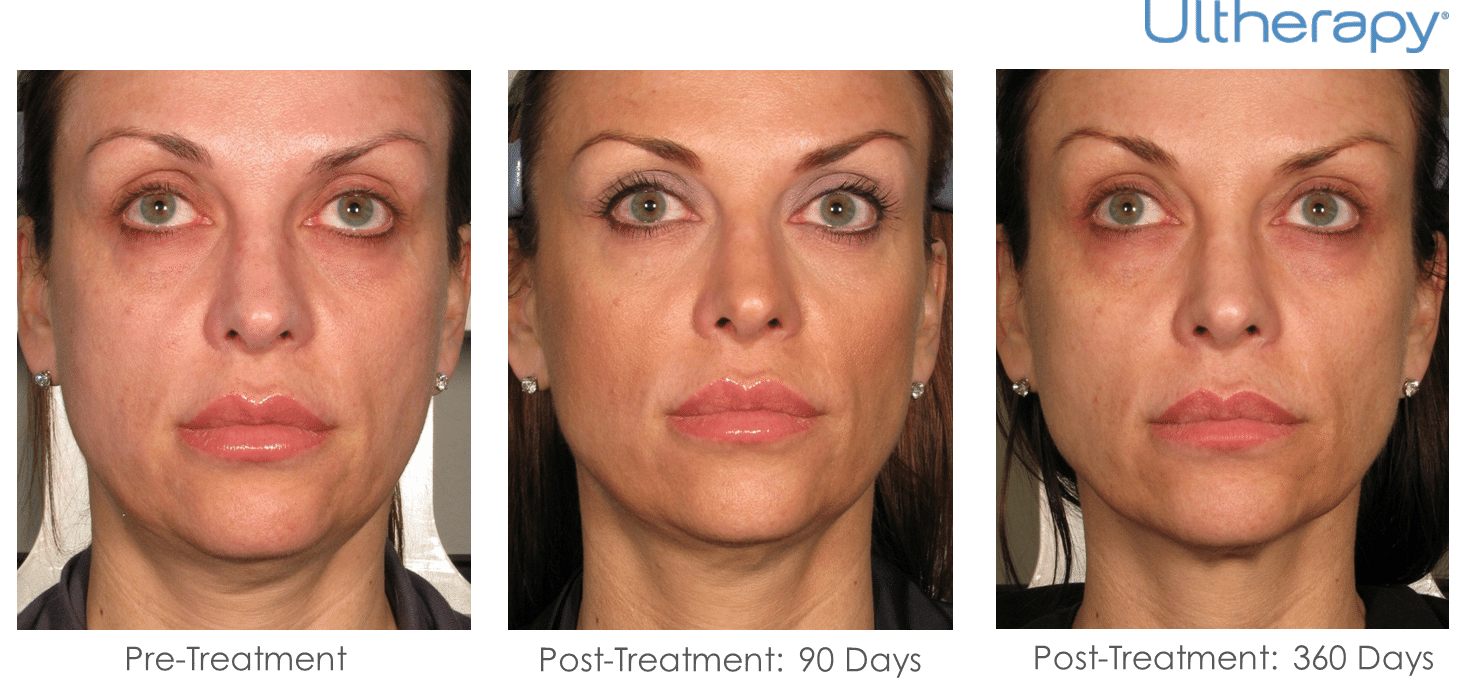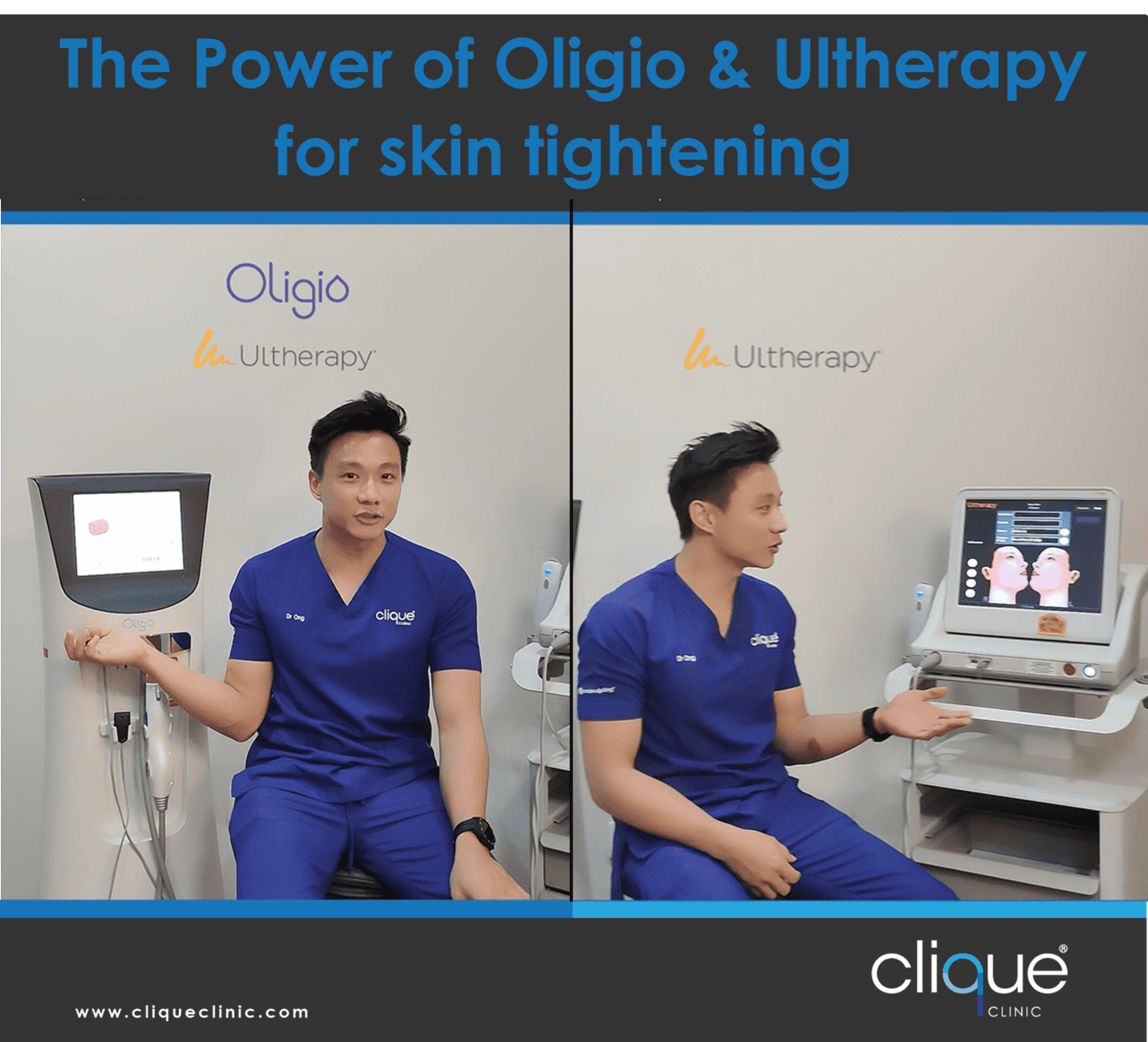Why Ultherapy Could Be Medically Needed: Checking Out the Factors for a Non Surgical Lift
Ultherapy is obtaining interest as a feasible option for people encountering skin laxity as a result of maturing or particular clinical problems. This non-surgical treatment stimulates collagen manufacturing, supplying a remedy that stays clear of the healing time connected with intrusive procedures. As individuals seek to improve not just their appearance yet likewise their general skin wellness, comprehending the conditions that warrant Ultherapy's usage ends up being vital. What aspects add to its clinical need?
Comprehending Ultherapy: What It Is and Just how It Functions
Ultherapy, a non-invasive cosmetic procedure, uses ultrasound innovation to boost collagen production and promote skin tightening up. By delivering concentrated ultrasound power deep into the skin, it targets the fundamental layers normally attended to in medical facelifts. This procedure urges the body's natural recovery response, leading to steady lifting and firm of the skin over time.

Therapy sessions usually last between 30 to 90 minutes, relying on the size of the area being dealt with. While results might not be instantly noticeable, perfect results normally show up within two to 3 months as collagen remains to create. Ultherapy offers a compelling non-surgical alternative for individuals seeking skin restoration without the need for invasive treatments.
The Aging Refine: Effects on Skin Flexibility and Collagen
Aging inevitably brings modifications that lessen skin elasticity and collagen manufacturing, leading to visible indicators of sagging and wrinkles. As people age, the skin's ability to preserve moisture decreases, causing a drier and less durable surface. Collagen, a necessary protein in charge of skin structure, likewise lessens, causing the skin to lose its suppleness and vibrant look. Elements such as sunlight direct exposure, toxic wastes, and way of life selections further accelerate this decline in skin high quality.
This loss of flexibility and collagen develops a waterfall of adjustments, including the formation of jowls, deepening nasolabial folds, and an overall drooping look. The skin's assistance system damages, making it extra prone to the impacts of gravity. Several people look for interventions like Ultherapy to combat these aging effects, intending to recover a much more vibrant, taut appearance without the demand for invasive medical treatments.
Medical Problems That May Advantage From Ultherapy
Ultherapy is significantly identified for its prospective advantages in attending to various medical problems. People experiencing skin laxity, those in post-surgical healing, and patients with chronic skin conditions might locate this non-invasive treatment beneficial. By promoting collagen manufacturing, Ultherapy can enhance skin firmness and improve general look for these groups.
Skin Laxity Problems
Skin laxity can be a significant issue for people experiencing numerous clinical problems that influence the integrity and elasticity of their skin. Conditions such as Ehlers-Danlos syndrome, which interrupts collagen manufacturing, can bring about early skin aging and sagging. Additionally, individuals with autoimmune conditions may experience skin modifications that add to laxity. Hormone variations, specifically throughout menopause, also play a role in decreasing skin firmness. Ultherapy, using ultrasound innovation, targets the deeper layers of skin, promoting collagen production and tightening the affected areas. This non-invasive treatment may supply a viable solution for those looking for to resolve skin laxity arising from these clinical conditions, improving both appearance and self-esteem without the need for medical treatment.
Post-Surgical Healing Aid
Post-surgical recovery can frequently present obstacles, specifically for people experiencing skin laxity because of surgical treatments. Ultherapy offers as a prospective aid in this situation, making use of ultrasound innovation to stimulate collagen manufacturing and boost skin tightness without invasive treatments. Clients who have actually gone through surgical treatments such as facelifts, liposuction surgery, or other body contouring procedures might find that Ultherapy boosts their healing by dealing with irregular structure and laxity that can occur post-operation. This non-surgical approach can bring about enhanced visual results, potentially lowering the requirement for added surgical treatments. It might assist alleviate pain associated with the recovery process, offering clients an extra all-inclusive recovery experience. As a result, Ultherapy can be a beneficial choice in post-surgical treatment.
Chronic Skin Problem
For people dealing with persistent skin problem such as acne marks, rosacea, or laxity as a result of aging, non-invasive therapies might use significant relief and renovation. Ultherapy has actually become an appealing alternative, using ultrasound innovation to boost collagen manufacturing deep within the skin. This procedure can boost skin appearance and elasticity, dealing with problems like unequal complexion and drooping. Specifically, those with rosacea might experience reduced redness and inflammation, while clients with acne scars can benefit from enhanced skin smoothness and general appearance. Significantly, Ultherapy offers a non-surgical option that lessens healing time and dangers connected with invasive treatments, making it an enticing choice for people looking for efficient administration of persistent skin problem.
Emotional Influence of Sagging Skin and Aesthetic Concerns
The psychological toll of aging often manifests in the kind of drooping skin, which can substantially impact an individual's self-esteem and overall emotional wellness. Lots of people associate vibrant appearances with energy and good looks, bring about sensations of inadequacy when confronted with noticeable signs of aging. This regarded decrease in charm can cause social anxiousness, withdrawal from social interactions, and an increased obsession with one's appearance.
People may feel urged to seek visual treatments to battle these worries, as the desire to keep a younger appearance can end up being linked with personal identification. The psychological results of sagging skin might also cause depression or a lessened quality of life. Non-surgical choices like Ultherapy arise as potential options, intending not only to invigorate the skin yet also to bring back self-confidence and a favorable self-image, ultimately dealing with the much deeper psychological implications of aging.
Comparing Ultherapy to Conventional Surgical Options
When comparing Ultherapy to standard medical options, significant differences emerge in both cost-effectiveness and healing time. Ultherapy i was reading this deals a non-invasive strategy that often results in lower costs and very little downtime for individuals. In comparison, medical lifts typically require more financial investment and a prolonged healing period.
Cost-Effectiveness of Ultherapy

Although typical medical lifts usually feature substantial ahead of time expenses and prolonged healing times, Ultherapy presents a compelling choice that can supply equivalent outcomes at a portion of the cost. The ordinary expense of a surgical renovation can vary from $7,000 to $15,000, while Ultherapy treatments typically drop in between $2,000 and $4,500, depending upon the area dealt with and service provider know-how. Furthermore, the lack of extensive pre-operative analyses and post-operative care related to Ultherapy additionally adds to its cost-effectiveness. This strategy not only decreases monetary strain yet likewise allows individuals to purchase various other facets of their health and wellness and well-being. By doing this, Ultherapy becomes a monetarily feasible alternative for those looking for face rejuvenation without the worries of typical surgery.
Healing Time Comparison
Healing time is a considerable consider the decision-making process for those taking into consideration cosmetic treatments. Ultherapy attracts attention as a non-surgical choice that generally needs marginal downtime. Many individuals can go back to their day-to-day activities practically quickly, experiencing just mild redness or swelling that normally settles within a few hours. On the other hand, conventional surgical choices, such as renovations, usually demand a lengthy recovery period. Clients may deal with a number of weeks of swelling, wounding, and limited task, with some going back to regular regimens using up to 3 months. This plain difference in healing time makes Ultherapy an attractive option for individuals seeking efficient results without the comprehensive aftercare related to surgical treatment, enabling for a smoother modification back to daily life.
The Long-Term Advantages of Non-Invasive Treatments for Skin Health
As individuals increasingly look for options to surgical procedures, the long-term advantages of non-invasive treatments for skin health become more apparent. Treatments such as Ultherapy, chemical peels, and laser treatment deal significant advantages without the demand for considerable healing times connected with surgical treatment. Density RF Malaysia. Over time, these non-invasive alternatives can advertise collagen manufacturing, resulting in stronger skin and a much more vibrant appearance
Additionally, normal non-invasive treatments can boost skin texture, tone, and flexibility, improving total skin health and wellness. Patients commonly experience fewer difficulties and adverse effects, making these treatments a lot more enticing.
Additionally, the cumulative impacts of regular treatments their explanation can maintain and prolong aesthetic renovations, allowing people to keep their preferred appearance with minimal downtime. By focusing on non-invasive methods, people can achieve enduring results while prioritizing their health and wellness and well-being. Inevitably, the long-lasting advantages of such approaches emphasize their growing popularity in modern-day skincare.
Frequently Asked Inquiries

For how long Does an Ultherapy Session Generally Take?
An Ultherapy session generally lasts in between 30 to 90 mins, depending on the treatment location. Factors such as the person's particular demands and the level of the treatment can influence the general period.

Exist Any Type Of Side Effects Associated With Ultherapy?
Ultherapy can bring about negative effects such as temporary soreness, swelling, or tenderness in the cured area - Ultherapy Malaysia. While the majority of individuals experience marginal discomfort, it is critical to speak with a professional for individualized advice and possible reactions
Exactly How Quickly Can I See Results After Treatment?
Arise from Ultherapy usually start to appear within 2 to 3 months post-treatment. The complete effects may remain to develop over six months as collagen manufacturing rises, leading to obvious training and tightening of the skin.
Is Ultherapy Suitable for All Skin Types?
Ultherapy is normally ideal for various skin types, including lighter and darker tones. Private skin problems and problems might influence its performance, making appointments with a certified expert crucial for customized referrals.
Just How Often Should Ultherapy Treatments Be Repeated?
Ultherapy treatments are generally recommended every 6 to year, depending on individual skin disease and desired click here for more info results. Normal analyses by a certified expert can aid figure out the finest frequency for maintenance and effectiveness.